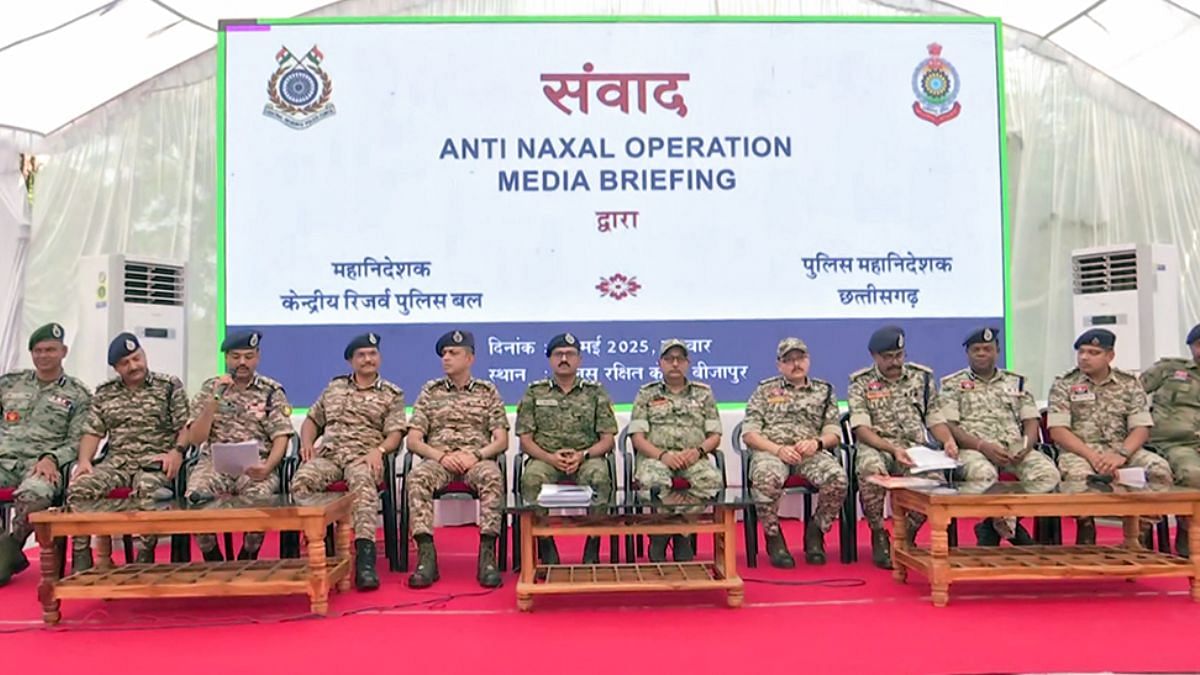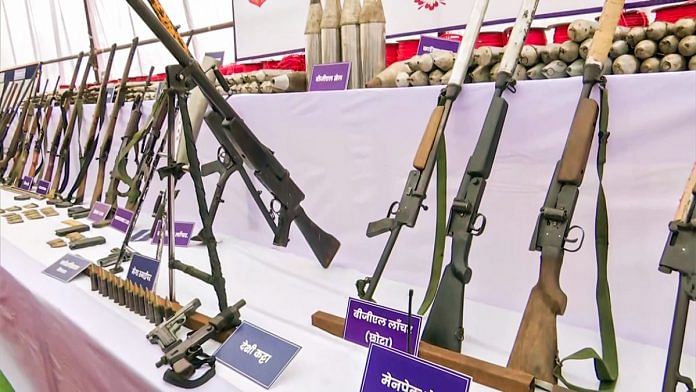New Delhi: Several of the top Maoist leaders have either been killed or left grievously injured, but not all could be located in the rugged terrain of Karregutta hill, top officers of the Central Reserve Police Force (CRPF) and Chhattisgarh Police said Wednesday.
Additionally, they said that the “main objective” of the operation—to dislocate the banned outfit’s leadership into splinter groups and clear the hills of Maoist presence—was achieved.
The security establishment officers said this during a press conference Wednesday in Bijapur, chaired by CRPF Director General Gyanendra Pratap Singh and Chhattisgarh Director General of Police (DGP) Arun Dev Gautam.

The operation was described as the “largest and most extensive anti-Maoist operation to date” by DGP Gautam.
The chief of the state police’s anti-Naxal operations, Vivekananda Sinha, also made remarks on the operations and the overall campaign against the Maoists in the state. At the same time, Bijapur Superintendent of Police Jitendra Kumar Yadav shared minute details of the operations.
The operation, which began on 21 April and ended on 11 May, saw at least 21 encounters with suspected Maoists, resulting in the deaths of 31 of them. Eighteen security personnel were injured, some grievously, with a few even requiring amputations.
Additionally, security forces, including troops from the CRPF, its elite CoBRA unit, the state’s Special Task Force, and the District Reserve Guard, recovered 450 improvised explosive devices.
“The process of detailed identification of the bodies is ongoing. Based on information gathered during this historic 21-day operation, it is believed that several senior Maoist cadres have either been killed or seriously injured. However, not all bodies could be recovered due to the rugged terrain,” ADG Vivekananda Sinha said to the press.
“The main objective of launching the operation on Karregutta hill, or KGH, was to dislocate the leadership congregating in one place. The forces have succeeded in that objective, and their leadership is completely segregated and dislocated. Even their military formations have been splintered into smaller groups, and they have taken shelter at different places,” he said.
The latest series of encounters at KGH comes at a time when security forces have aggressively pursued the anti-Naxal drive in the country to meet the goal of eradicating the issue by March 2026, as declared by the Union Home Minister Amit Shah.
CRPF Chief Singh said that whatever they set out to do, they have “achieved more than that”. “We are confident and happy that this is the beginning of the end and we will achieve the target of completely eliminating Naxal violence from the country by 31 March, 2026,” he added.
New challenges encountered
Discussing the operation’s details, ADG Sinha said that as security forces established new camps in areas previously dominated by Maoists and intensified their operations, senior Maoist leaders went into hiding, and formed a unified armed command and retreated to the Karregutta hills—a rugged area stretching 60 km long and 5-20 km wide, located between Bijapur and Telangana’s Mulugu district.
After verification of inputs about the presence of around 300 armed cadres, including several top ones, security forces were assembled and inducted into the area for the operation starting 21 April.
“This operation aimed to weaken the armed strength of the Maoists, neutralise their armed groups, clear them from these difficult terrains, and dismantle the PLGA (People’s Liberation Guerrilla Army) Battalion,” Chhattisgarh DGP Gautam said.
Giving numbers related to the operation, Bijpaur SP Jitendra Kumar Yadav said that the forces busted and destroyed 216 hideouts and bunkers. The troops also recovered 450 IEDs and 818 BGL shells. DG Singh said that BGLs have been used in attacks against security camps in the past, while IEDs have been the most challenging aspect of any anti-Naxal operations.
He added that forces destroyed four Maoist technical units, which were involved in the manufacturing of BGL shells, locally fabricated weapons, IEDs, and other deadly weapons.
He said troops had to use cave intervention techniques because of the large number of cave hideouts the Naxals had constructed on the hill.
“One of the major learnings or new techniques we used during these operations was cave interventions. Generally, our troops are trained for house intervention and vehicle intervention. This was the first time that we were encountering caves in such large numbers, so we had to work it out so that we do not suffer casualties and can neutralise the Maoists present there,” Singh said.
“Second, a huge number of IEDs were detected. Almost 450 IEDs were detected by troops. These IEDs were kept in beer bottles, so the content of metals in these IEDs was minimal. We had to use a lot of ingenuity to detect these IEDs. We are doing regular debriefings and having discussions with frontline troops to strengthen further our standard operating procedure for similar operations in the future,” he said.
(Edited by Zinnia Ray Chaudhuri)
Also read: Security forces kill 30 suspected Maoists in 2 simultaneous ops in Bastar. Toll crosses 100 this yr






